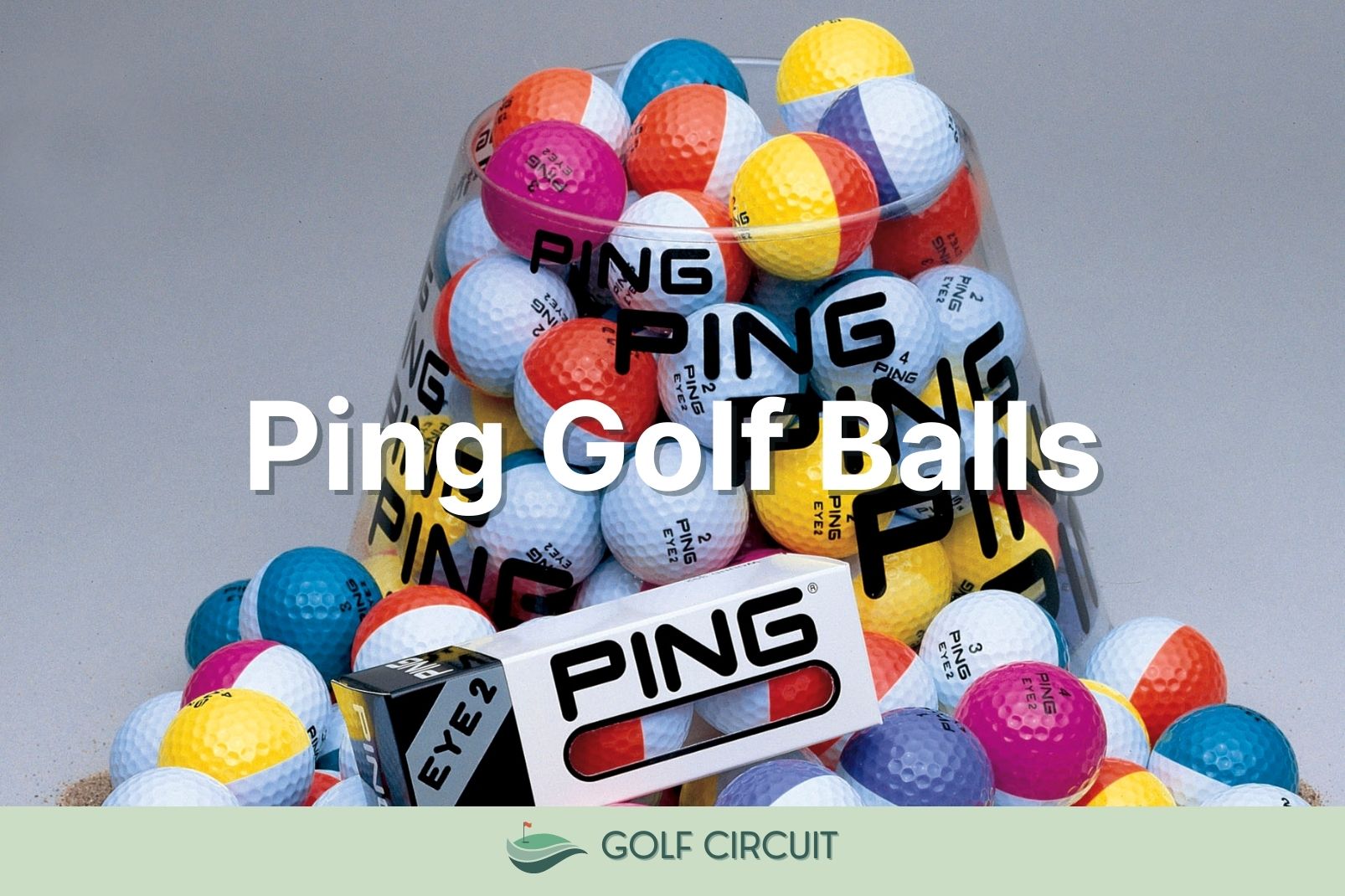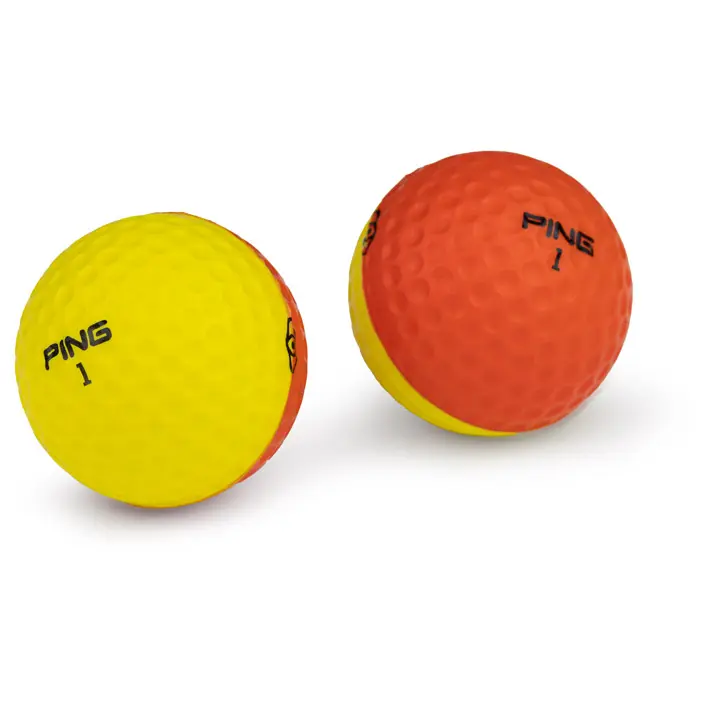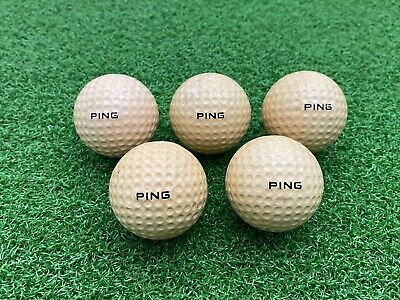Ping Golf Balls: Why Are They So Expensive in 2023?

Golf, like every other sport, has a diverse fan base that enjoys the nuances of the game, and golf balls are one such nuance. This includes Ping golf balls. Read on to find out more, including why these golf balls are so expensive.
As simple as it may look at first glance, the golf ball’s design takes into consideration a wide range of variables that impact its speed, accuracy, and height during play.
Golf balls have gone through various modifications and refinements since golf’s beginnings in the 15th century, resulting in some unique collector’s items.
Ping golf balls are one such collector’s item. Read on to find out why they are so expensive.
The History of Ping Golf
Ping is one of the most well-known names in golf club manufacturing when it comes to consumer confidence.
Karsten Solheim, a former engineer who began making putters in his workshop in 1959, created Ping in Phoenix, Arizona.

Solheim developed the term Ping to describe the sound of the clubhead striking the ball. Solheim designed his first putter, the Ping 1A, because he was unhappy with the putters available at the time and wanted to create something better.
Solheim used scientific techniques to determine that the blade of the Ping 1A should be mounted to the middle rather than the rear.
Later on they developed amazing things for the golf industry, one of which being the Ping color chart.
When Did Ping Become Popular?
After John Barnum used a Ping putter to win the Cajun Classic Open Invitational in 1962, the popularity of Ping putters exploded. It was the first time a PGA Tour golfer had won using a Ping club and probably the first time many amateur and hobby golfers had seen one.
In 1965, sales of PING putters skyrocketed once again during the Golf World Cup in Japan, when several of the golfers were shown on television using Ping putters.
It seems then as now, influencers really could make a difference when it came to sales and making something into a household name.
What Happened Next?
At the start of 1966, Solheim drew a sketch of a new putter on the back of a record sleeve. This was the now legendary ‘Anser’.
The name Anser came from his wife, who thought the club should be called ‘Answer,’ seeing as Solheim had designed it to be the answer to putting issues for golfers. But that was too long for a putter – it wouldn’t fit when engraved – and couldn’t be a trademark.
The easy answer – no pun intended – was to simply take out the ‘w’. It was as simple as that.
The design of the Anser putter was revolutionary.
It had an offset hosel that let the golfer see the whole face. It also had lines that ran parallel to the face to make it easier for players to line up the putter with the ball. The putter also had a cavity back and a low center of gravity, much like a face-balanced putter.
It quickly rose to prominence as one of golf’s most widely used putters. It has won more than 500 tournaments and 19 men’s major championships, making it the most successful putter in golf history.
It’s no surprise that practically every putter on the market now has a design similar to the Anser’s.
Why Was Ping Outlawed?
You might be surprised to hear that the Anser is so well used; weren’t Ping putters outlawed in championships? That’s only half the truth.
Solheim made many different styles of Ping putters, but the USGA banned all of them except for the Anser in 1966. This was because the shaft was made with a bend, which golf’s governing body thought gave players an edge when putting.
What About Ping Golf Balls?

Ping didn’t just make putters. They also had a hand in designing irons and other equipment, much of which is still very well-loved and popular today. Until 1997, they also made golf balls, and this isn’t something that everyone is aware of.
These balls were easy to spot. They were made in a two-tone color design, and whether they were on the green, lost in the rough, or spinning through the air, you would know exactly which ball was yours.
Problems With Ping Golf Balls

Although it might seem natural that a golf equipment company would manufacture golf balls, it’s not an easy thing to get right. It’s a science rather than an art, and Ping, for all its bright colors, couldn’t quite get the science right.
In fact, Karsten Solheim has said that trying to get into the golf ball market was his one regret; it was costly, and Ping didn’t have the expertise needed. The balls were not seen as good to play with, and were often relegated to putting practice.
Why Are Ping Golf Balls So Expensive?
The history of golf balls is long and interesting, and like anything else, there is a community of people who collect them in any form they might come in. Vintage golf balls are particularly collectible, sometimes fetching high prices.
Check out this video below and see for yourself.
But you can collect more than just old golf balls. Golf balls with certain stamps and logos, as well as those that have been signed by the player, are just as popular.
Although not perhaps considered to be great for the game of golf itself, it seems that nowadays, the two-tone Ping golf ball is one of these collectors’ items. Why is this?
One reason is that there is a finite number of these golf balls. Production was halted in 1997 when sales slumped because golfers just couldn’t use the balls effectively. Plus, the garish colors weren’t to everyone’s taste.
On top of this, golf balls do have a tendency to get lost. It could be in a water hazard, it could be in a particularly difficult bunker. It could be in the rough. It might even be from fall out of a pocket on the way around the course.
When you combine the fact that there are no more Ping golf balls being made, and so many will have been lost over the years, they are becoming rarer, and that is a good thing when it comes to collecting. It also bumps the price up.
It’s not just the balls themselves that are expensive. Some can be bought for as little as $10 a piece (which of course, is pricey for a golf ball, but not so expensive when compared to what other Ping balls are fetching).
So what is it that makes a Ping golf ball expensive?
It’s the color. Some color combinations (the less bright and bold ones in most cases) were more popular than others; they therefore sold more, so there are more of them around.
The colors that didn’t sell too well in the 80s and 90s, however, are rarer, so as collectibles, they’re more expensive.
Ping themselves have a handy chart explaining which colors are the most expensive. The balls that have white in them are the least collectible, and the most expensive to look out for is the ‘camo swirl’.
FAQs
Who made Ping golf balls?
Ping, the golf equipment manufacturer, made the golf balls.
Where can I get Ping golf balls?
Today you can’t buy new Ping golf balls, but you can search auction sites and online stores for them. You might even find them at garage sales and charity stores.
When did they stop making golf balls?
Ping stopped making golf balls in 1997.
Final Thoughts
Ping is a well-regarded name in the world of golf, and it is this company we have to thank for many of the innovations in how the game is played. Many wouldn’t be without their Ping putters and irons.
However, being good at one thing doesn’t automatically make you good at everything, and this is what Ping discovered when they started to make golf balls.
Since production stopped in 1997, these balls have gone on to become collectors’ items; something that will have taken many people by surprise.






